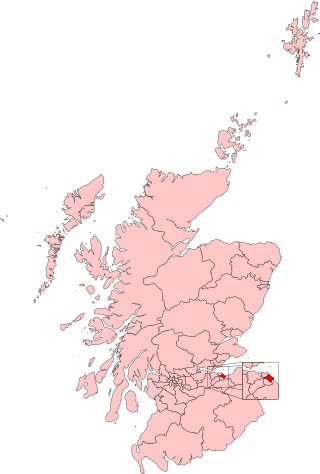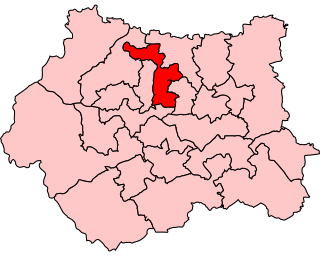
Edinburgh East is a burgh constituency of the House of Commons of the Parliament of the United Kingdom. It elects one Member of Parliament (MP) by the first past the post system of election.

Pudsey is a constituency represented in the House of Commons of the UK Parliament since 2010 by Stuart Andrew, a Conservative.

Birmingham Hall Green is a parliamentary constituency in the city of Birmingham, which has been represented in the House of Commons of the UK Parliament since 2019 by Tahir Ali of the Labour Party.

Birmingham Perry Barr is a constituency in the West Midlands, represented in the House of Commons of the UK Parliament since 2001 by Khalid Mahmood of the Labour Party.

Dagenham was a borough constituency represented in the House of Commons of the UK Parliament that elected one Member of Parliament (MP) by the first past the post system of election. It was replaced at the 2010 general election largely by Dagenham and Rainham.
Edinburgh North was a burgh constituency of the House of Commons of the Parliament of the United Kingdom from 1918 to 1983. It elected one Member of Parliament (MP) using the first-past-the-post voting system.
Glasgow Hillhead was a parliamentary constituency represented in the House of Commons of the Parliament of the United Kingdom from 1918 until 1997. It elected one Member of Parliament (MP) using the first-past-the-post voting system.
Glasgow Pollok was a burgh constituency represented in the House of Commons of the Parliament of the United Kingdom from 1918 until 2005, when it was replaced by Glasgow South West. It elected one Member of Parliament (MP) using the first-past-the-post voting system.
Stirling and Falkirk Burghs was a parliamentary constituency represented in the House of Commons of the Parliament of the United Kingdom from 1918, comprising the burghs of Stirling, Falkirk and Grangemouth. It ceased to be a District of Burghs in 1950, but a constituency of the same name covering the same burghs continued in existence. In 1974 it became Stirling, Falkirk and Grangemouth. This was in turn abolished in 1983; it was the last British constituency to consist of non-contiguous parts.
Glasgow Craigton was a burgh constituency represented in the House of Commons of the Parliament of the United Kingdom from 1955 until 1983.

Rutherglen was a burgh constituency represented in the House of Commons of the Parliament of the United Kingdom from 1918 until 2005. From 2005, most of the area is represented by Rutherglen and Hamilton West, while a small portion is now in Glasgow Central and Glasgow South.
Glasgow Scotstoun was a burgh constituency of the House of Commons of the Parliament of the United Kingdom from 1950 until 1974. It elected one Member of Parliament (MP) using the first-past-the-post voting system.
Kilmarnock was a county constituency of the House of Commons of the Parliament of the United Kingdom from 1918 to 1983. It elected one Member of Parliament (MP) by the first past the post system of election.
South Worcestershire was a parliamentary constituency which returned one Member of Parliament (MP) to the House of Commons of the Parliament of the United Kingdom, elected by the first past the post voting system.
Newcastle upon Tyne West was a parliamentary constituency in the city of Newcastle upon Tyne from 1918 to 1983 which returned one Member of Parliament (MP) to the House of Commons of the Parliament of the United Kingdom.
Bedwellty was a county constituency in Monmouthshire which returned one Member of Parliament (MP) to the House of Commons of the Parliament of the United Kingdom from 1918 until it was abolished for the 1983 general election.
Bristol North East was a borough constituency in the city of Bristol. It returned one Member of Parliament (MP) to the House of Commons of the Parliament of the United Kingdom.
Nottingham West was a borough constituency in the city of Nottingham. It returned one Member of Parliament (MP) to the House of Commons of the Parliament of the United Kingdom.

Stockport South was a borough constituency which returned one Member of Parliament (MP) to the House of Commons of the Parliament of the United Kingdom from 1950 until 1983.
Kirkcaldy Burghs was a burgh constituency of the House of Commons of the Parliament of the United Kingdom (Westminster) from 1832 to 1974. It elected one Member of Parliament (MP) by the first-past-the-post voting system. From 1832 to 1950 it was, officially, a district of burghs constituency.